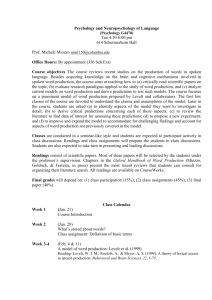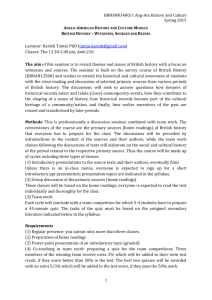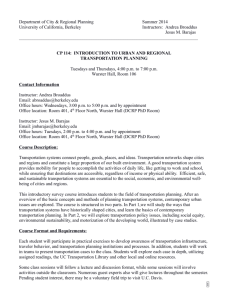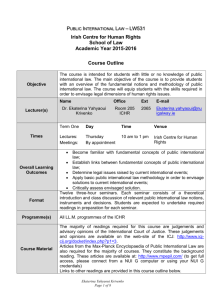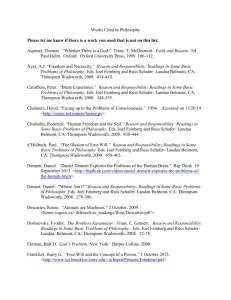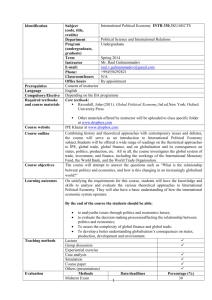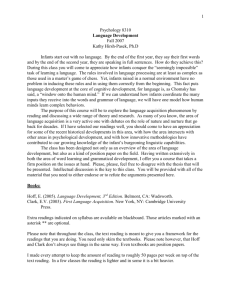course outline - University of Education, Winneba
advertisement
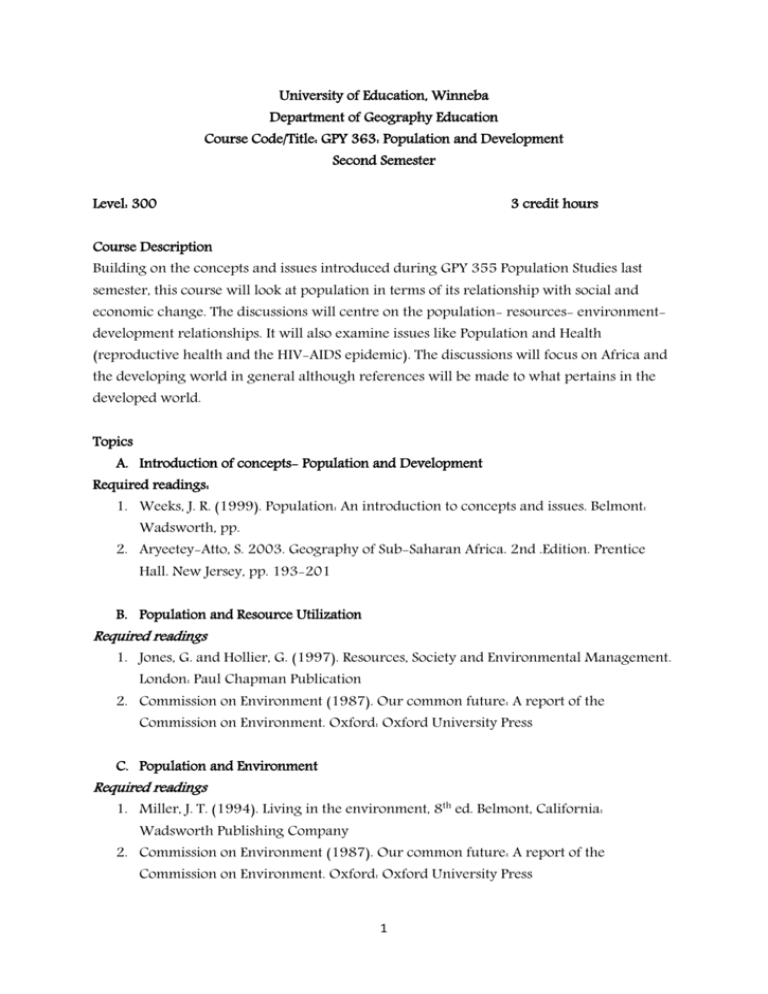
University of Education, Winneba Department of Geography Education Course Code/Title: GPY 363: Population and Development Second Semester Level: 300 3 credit hours Course Description Building on the concepts and issues introduced during GPY 355 Population Studies last semester, this course will look at population in terms of its relationship with social and economic change. The discussions will centre on the population- resources- environmentdevelopment relationships. It will also examine issues like Population and Health (reproductive health and the HIV-AIDS epidemic). The discussions will focus on Africa and the developing world in general although references will be made to what pertains in the developed world. Topics A. Introduction of concepts- Population and Development Required readings: 1. Weeks, J. R. (1999). Population: An introduction to concepts and issues. Belmont: Wadsworth, pp. 2. Aryeetey-Atto, S. 2003. Geography of Sub-Saharan Africa. 2nd .Edition. Prentice Hall. New Jersey, pp. 193-201 B. Population and Resource Utilization Required readings 1. Jones, G. and Hollier, G. (1997). Resources, Society and Environmental Management. London: Paul Chapman Publication 2. Commission on Environment (1987). Our common future: A report of the Commission on Environment. Oxford: Oxford University Press C. Population and Environment Required readings 1. Miller, J. T. (1994). Living in the environment, 8th ed. Belmont, California: Wadsworth Publishing Company 2. Commission on Environment (1987). Our common future: A report of the Commission on Environment. Oxford: Oxford University Press 1 3. Getis, A., Getis, J. and Fellamann, J. D. (1998). Introduction to geography (6th ed). Boston: WCB McGraw-Hill, pp. 143-185 4. Weeks, J. R. (1999). Population: An introduction to concepts and issues. Belmont: Wadsworth, pp. 464-482 5. Fouberg, E. H.., Murphy, A. B. and Blij, H. J. (2012). Human geography: People, place and culture (10th ed). USA: John Wiley and Sons Inc., pp. 452-458 D. Population and Health (Reproductive health and HIV AIDS) Required readings 1. Kibirige, J. S. (2002). Population growth, poverty and health. Population and Society: Essential Readings. Ontario: Oxford University Press, pp. 72-88 2. Caldwell, J. (2000). Rethinking the African AIDS epidemic. Population and Development Review, 26(1), pp. 673-705 3. Rubenstein, J. M. (2011). The cultural landscape: An introduction to Human Geogrpahy (11th Ed.). USA: Pearson, pp. 64-74 E. Population, Gender and Development Required readings 1. MacIintosh, A. and Finkle, J. (1995). The Cairo Conference on Population and Development: A new paradigm? Population and Development Review, 21(20), pp. 223-260 2. Dasgupta, P. and Logan, B. (2004). Is overpopulation a major cause of poverty in Africa? Taking Sides: Clashing Views on Controversial African Issues. Dushkin: McGraw-Hill, pp. 220-243 F. Population Policies and Programmes Required readings 1. Weeks, J. R. (1999). Population: An introduction to concepts and issues. Belmont: Wadsworth, pp. 487-534 2. Rubenstein, J. M. (2011). The cultural landscape: An introduction to Human Geogrpahy (11th Ed.). USA: Pearson, pp. 63-64 3. Fouberg, E. H.., Murphy, A. B. and Blij, H. J. (2012). Human geography: People, place and culture (10th ed). USA: John Wiley and Sons Inc., pp. 72-76 Course Assessment Students will be assessed or evaluated as follows: Quiz: 20 marks Class attendance and participation: 5 marks 2 Group presentation: topics will be assigned each group to research on and do a presentation of the findings in class- 15 marks End of semester examination: 60 marks Lecturer: E. F. Sam 3




